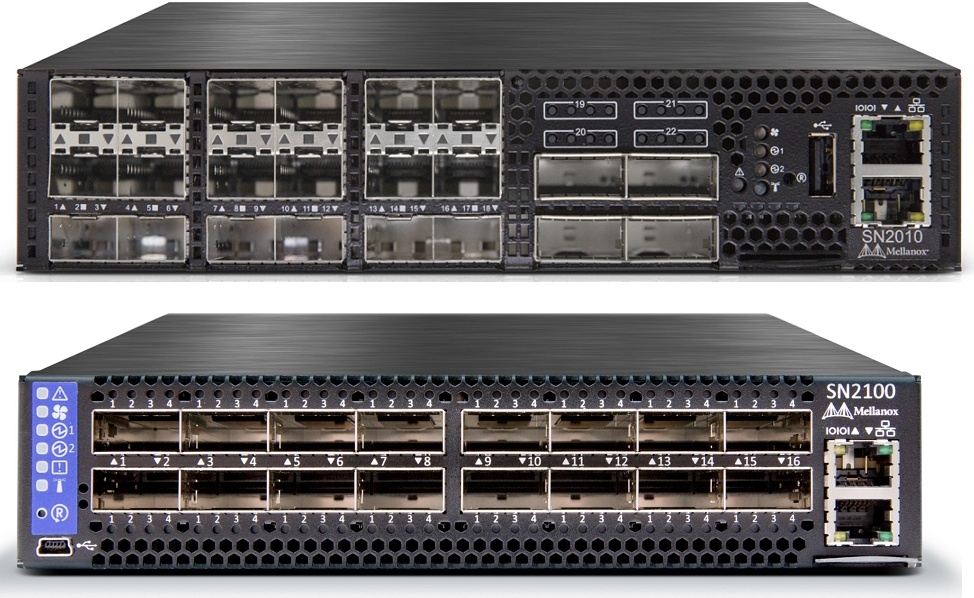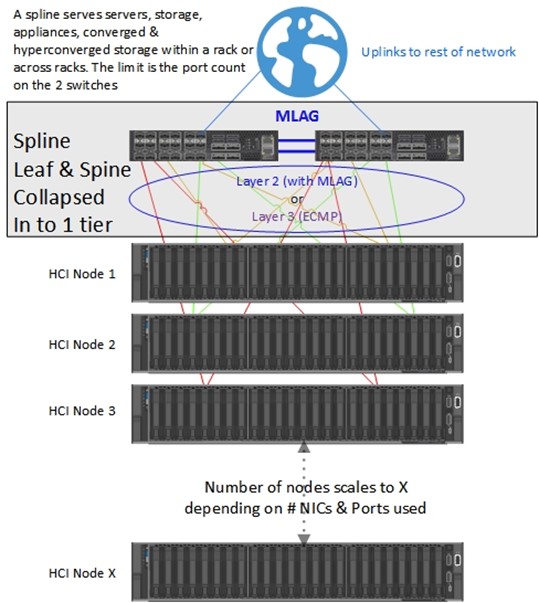Back in 2010, I introduced the first 10Gbps networking into my solutions. Cost effective and focused on single rack needs. I built my first Leaf-Spine based network somewhere in 2011-2012. Nothing major, but it did lead to the most cost-effective and efficient redundant 10Gbps network in every rack. The solution enabled cross rack and cross row connectivity (3 rows of 3 racks). As we were prepping for Windows Server 2012 we made sure we had DCB in that design covered. We loved it.
We isolated all the needs of the ops team from corporate networking to enable them “to own the stack”. Ops remained the owner of the entire stack. Network, storage, virtualization, data protection, core infrastructure etc. That meant we could do RoCE right and got the networking done at a great value for money ratio. Owning the stack has always been the way to avoid expensive silos. The only people who didn’t like it were those that made money or derived political power by controlling resources. We got shit done fast, efficient and effective at prices well below what people paid for a lot less “service”.
The leaf-spine design has remained a favorite of mine. Perfection is not of this world leaf-spine has challenges just like anything, but that doesn’t distract from the usability to build great solutions. One challenge that always remains is real fair load balancing, congestion, blocking … Depending on your size with a decent deployment you might never know of these challenges let alone how they are solved. With the extension of the network to the clouds, it remained a solid choice in a hybrid world. It also formed the basis for more cloud-like network designs on-premises. Some variations on leaf-spine exist and design choices depend on the context, needs, and possibilities.
Somewhere in those years the term “spline” made its appearance in the leaf-spine world and I was puzzled for a moment. What is a Spline? Is nothing more than the smallest possible form of a leaf-spine in a single tier, which is quite popular as it can integrate into existing environments by itself and enable scenarios some big corporations network team won’t or can’t ever enable. Basically, what I did in the early days to get 10Gbps into existing environments without too much pushback. So, it’s both a technical solution and a diplomatic tool as well as a nice marketing term.
What is Spline?
As said, a Spline is nothing more than the smallest possible form of a leaf-spine. That comes down to only 2 switches in a single tier. In this single tier, these 2 switches combine the roles of the leaf and spine, hence the name “Spline”. This is a nice marketing term for two small switches with ample of ports & bandwidth for a small sized deployment were leaf-spine would be overkill and cost prohibitive.
The switches are 1 or maximum 2 units high-density multi-rate devices. This could be anything between 1/10/25/40/50/100 Gbps depending on the model and vendors, available modules and cables used. It’s a viable choice for smaller deployments when one can have some margin for growth and wiggle room.

Mellanox SN2010 & SN2100 are prime example of great switches for a Spline

The modular DELL S6100 ON is another example of a switch to build splines with.
A single tier provides for the lowest latency possible by definition, no tiers need to be crossed – it doesn’t get any better. Predictable (it is always the same) distance and bandwidth is there as, again, there are no tiers to cross.
You can use layer 2 (MLAG, VLT, vPC) or layer 3 (ECMP) interlinks. You don’t lose any flexibility or options here. As such, it will work with traditional virtualization, containers, HCI and with Routing on Host, network virtualization.
What you lose is scale out. You need the leaf-spine to scale out bandwidth and port count in a flexible way. You can scale up by using bigger switches.
Top use cases for spine
Actually, many smaller solutions probably use a “spine” with layer 2 networking for S2D deployments. It’s easy to get 1 to 4 of S2D clusters in a rack depending on the size of the clusters and the number of ports & bandwidth in the switches. With 2 redundant smaller switches that don’t take up more than 1 or 2 units to provide them with ample 25Gbps ports or 100Gbps port you can split up to your needs.

Another prime candidate for a spline is StarWind their storage solutions. They have great offerings for varied needs and don’t force every need into the one type fits all solution of HCI. But in the end, you can use them in any environment where you need lots of bandwidth, high throughput, and low latency.
When and where I don’t like Spine
I don’t like large Spines. They are the same old story with potentially huge chassis switches that bring back all the drawbacks but they have been flattened into a single tier. They are prohibitively expensive, so normally there’s only 2 with a huge amount of ports leading to cabling expenses and logistical issues depending on the data center you’re in. Upgrading one of those 2 huge chassis switches tend to bring down a large part of your network (potentially half) and carries a greater risk. So, we’re back to why leaf-spine became so popular and remains popular.
When I look at it from a reverse perspective it’s like someone took a 1 rack or one deployment stamp design and created a giant version of it. All this in an attempt to scale it up instead of out. In reality, it was probably giant switches looking for a new sales pitch. It might work for some, but I would not design a solution based on this. It might have a familiar look and feel to some people but I never liked them very much, design-wise, concept-wise, money wise … but that’s me. Where you can use them if you have the appetite for that is in client networking. Still not a big fan but hey that’s where I tolerate stacks when needed (limited uplinks) as it doesn’t impact 24/7 operations as much and the clients accept the downtime & risk.
Conclusion
A spline is a great design for a rack-sized deployment. In a pinch you can cross racks or even rows but the cabling of that all can become costly. Depending on what’s allowed and possible in your data-center it might not even be an option. Pro Tip: choose your location wisely and never ever tolerate the one size fits all approach of a hosting provider, corporate network team or co-loco. That basically always means they are optimizing for their needs and budgets, not yours.
When using bigger deployments or where growth is very likely, I go for small leaf-spine deployments instead of scaled-up splines.
A Spline can be converted into part of a leaf-spine, so it allows for change and evolution in your network, you normally won’t lose your investment.
What I do not like about spline is when it is used to leverage those huge chassis switches again. It brings all the drawbacks in cost, lack of scale-out, limited redundancy and higher risk back into the picture. Simply flattening a bad idea in a single tier doesn’t make it great.
